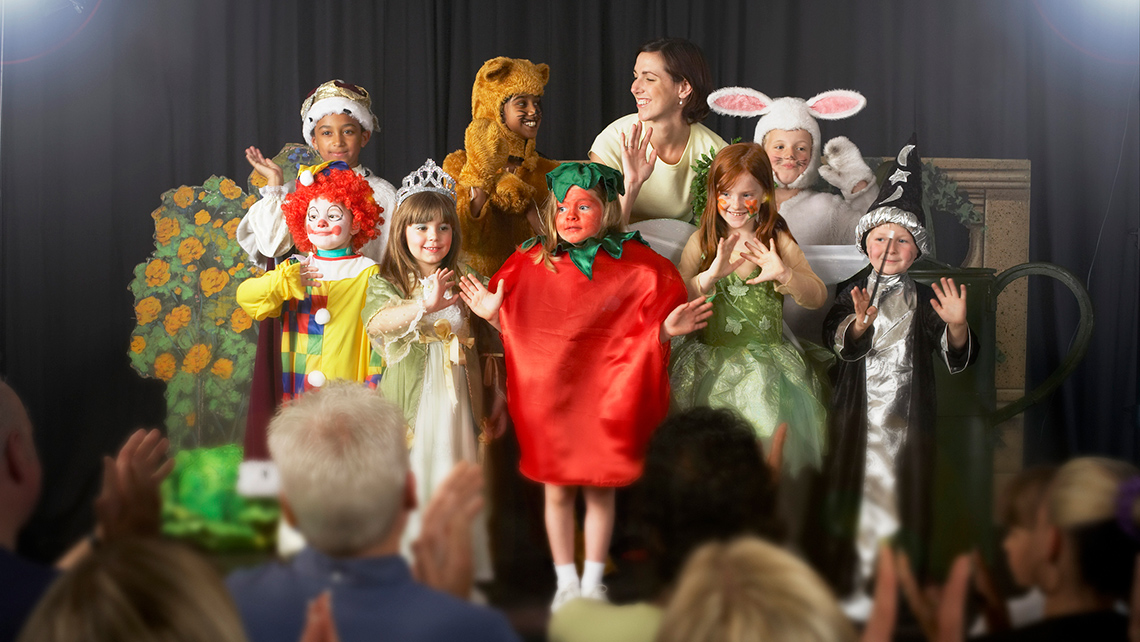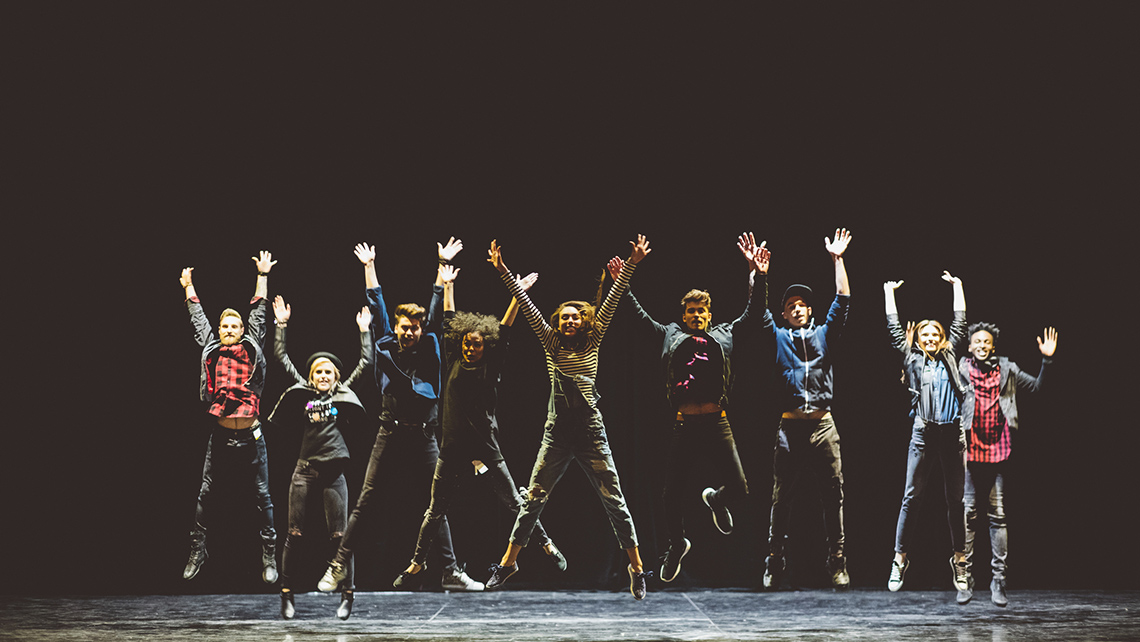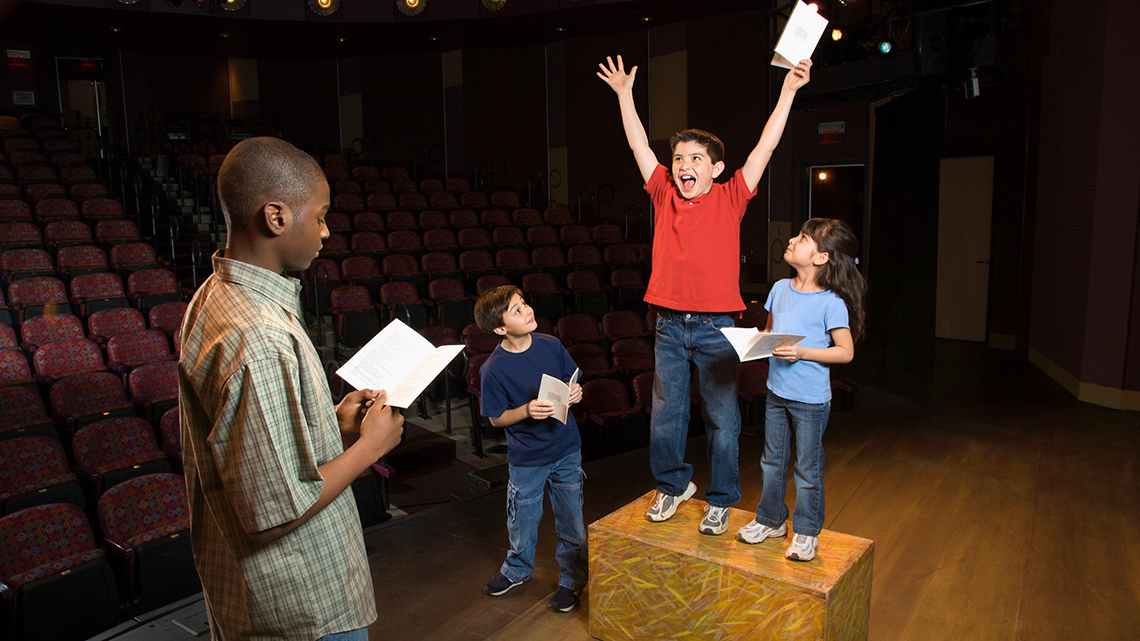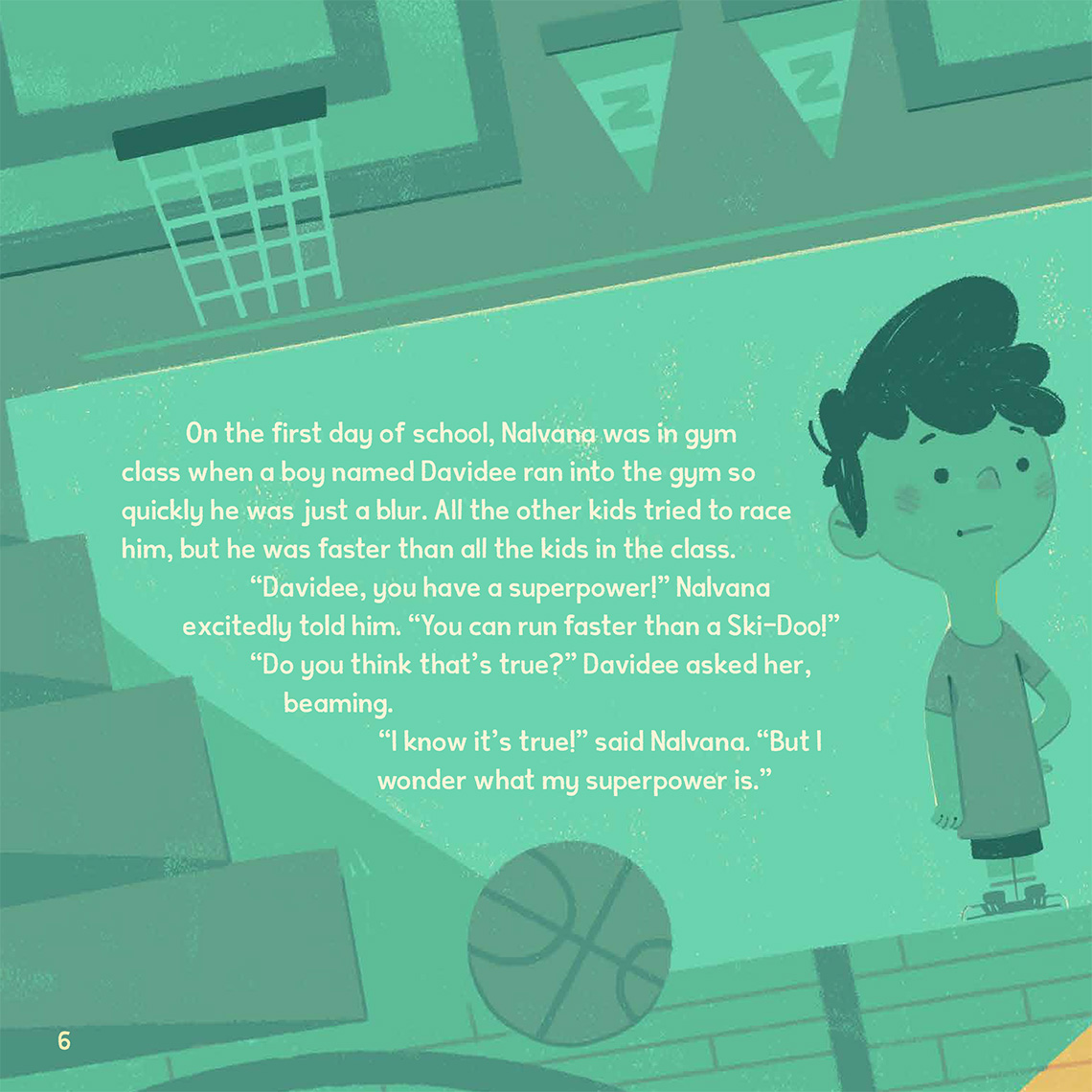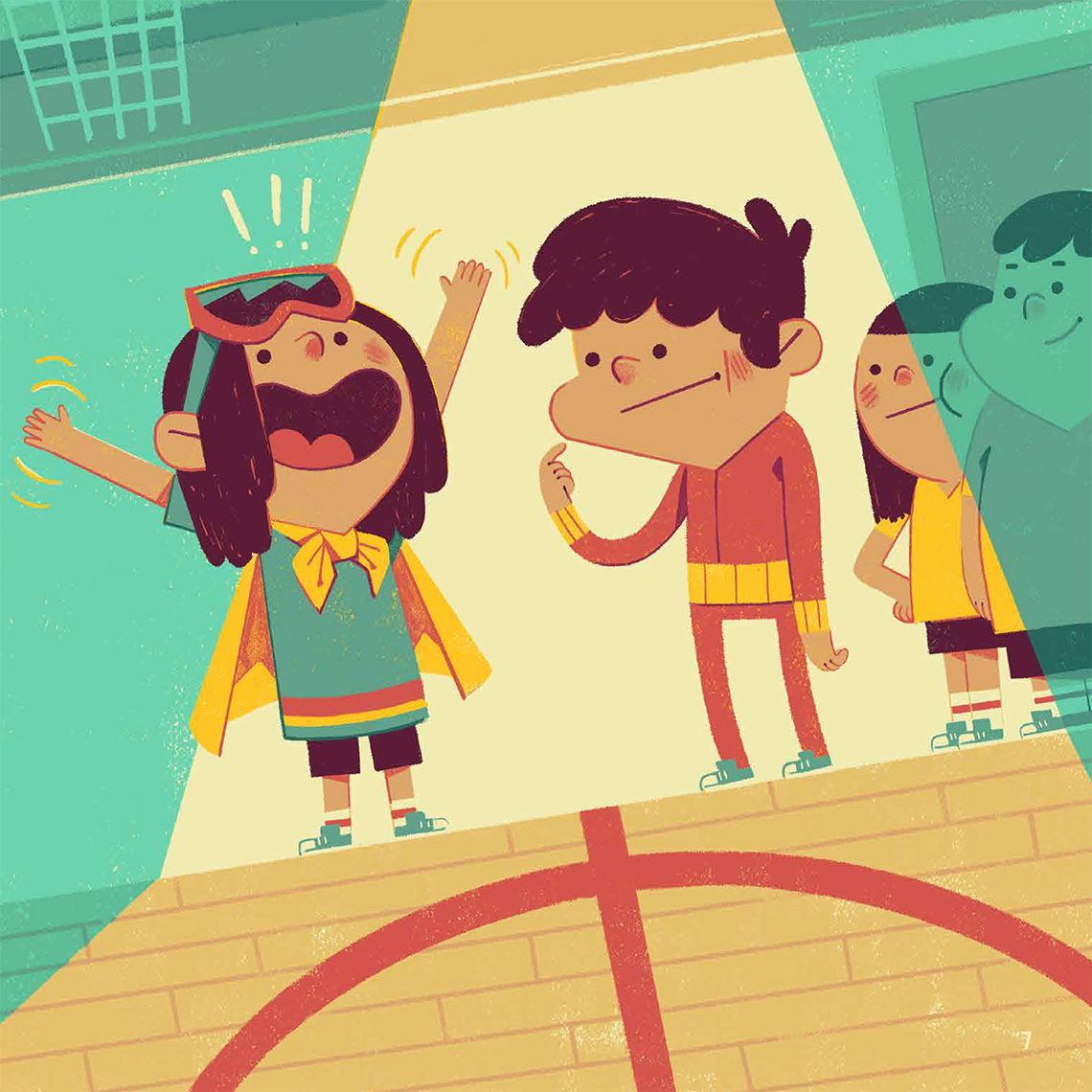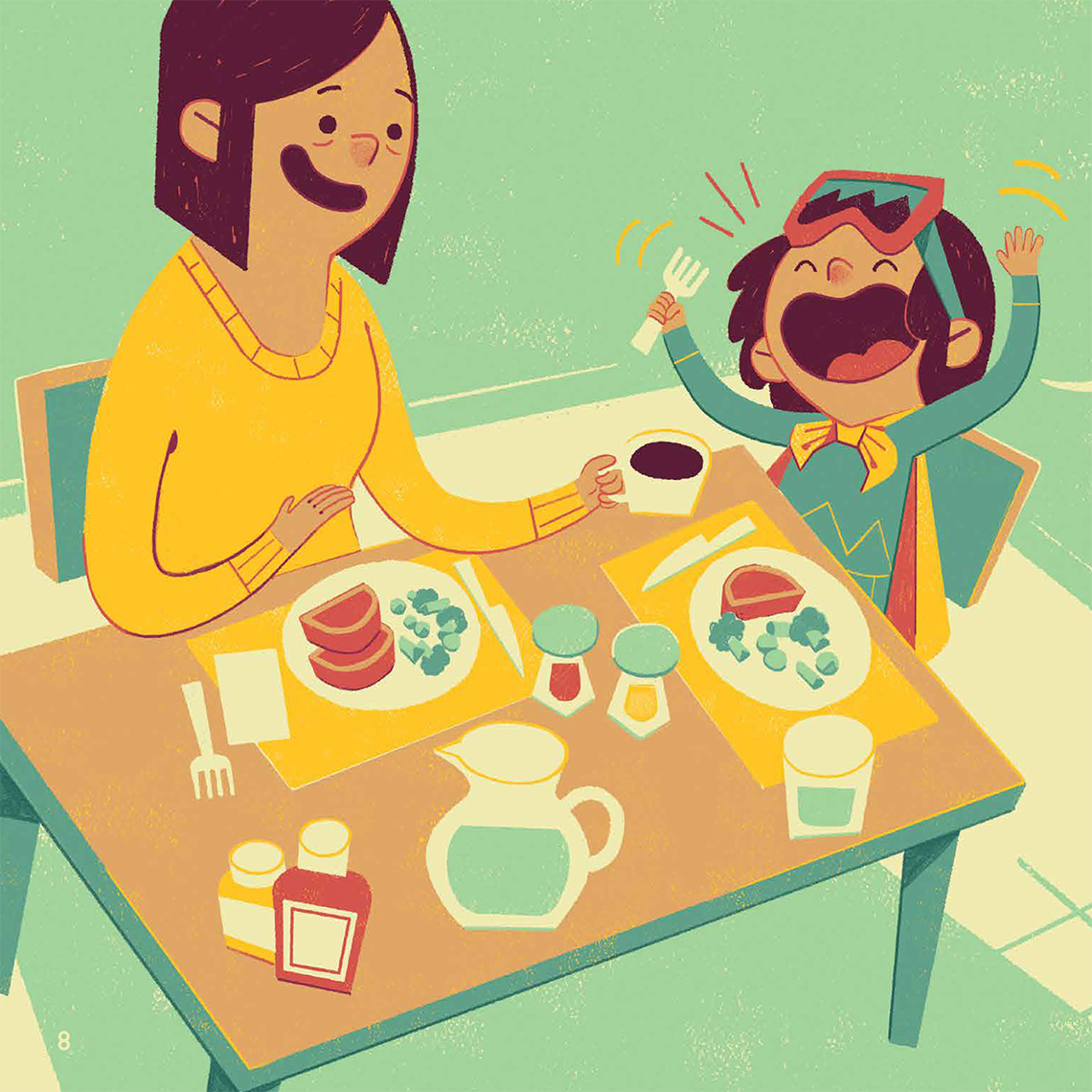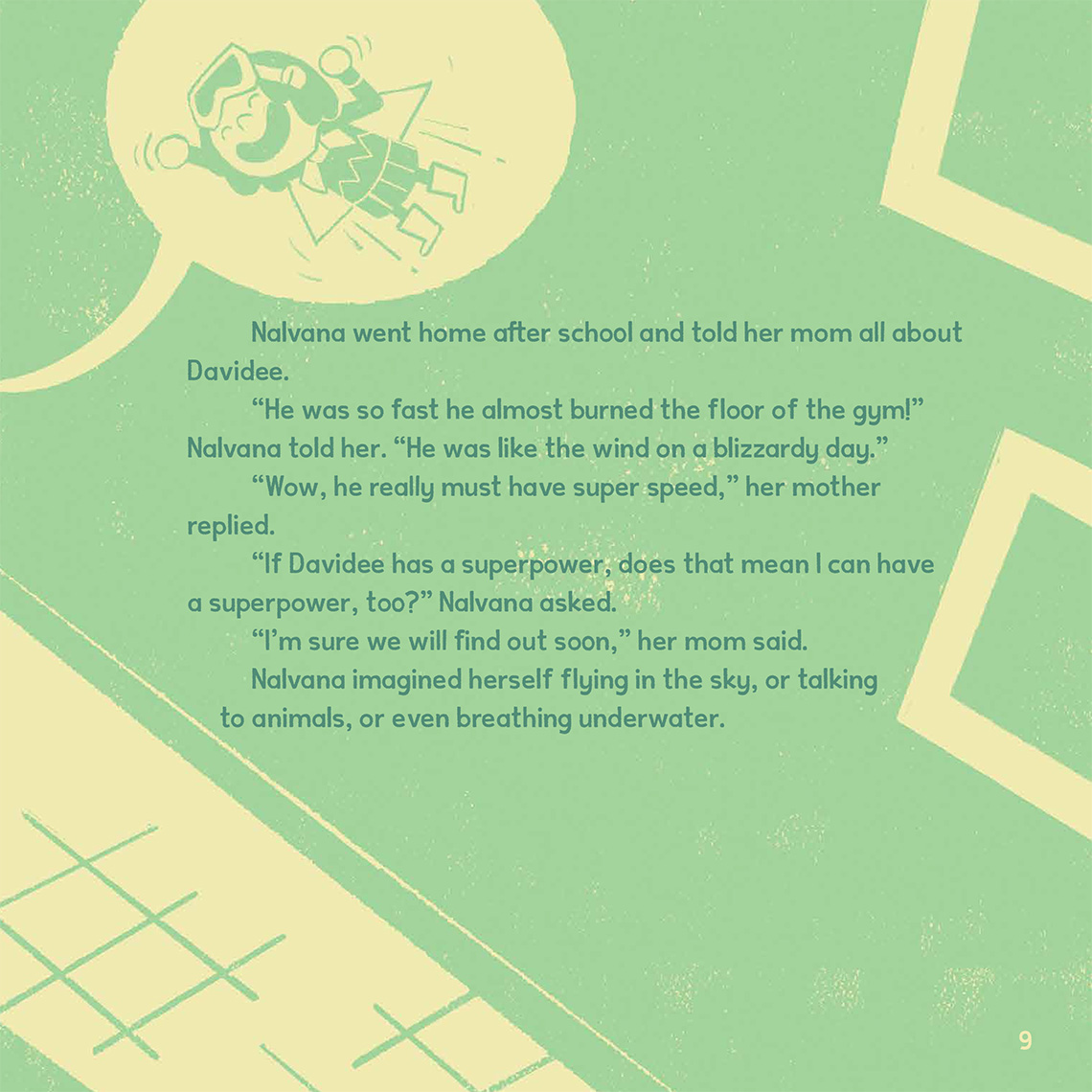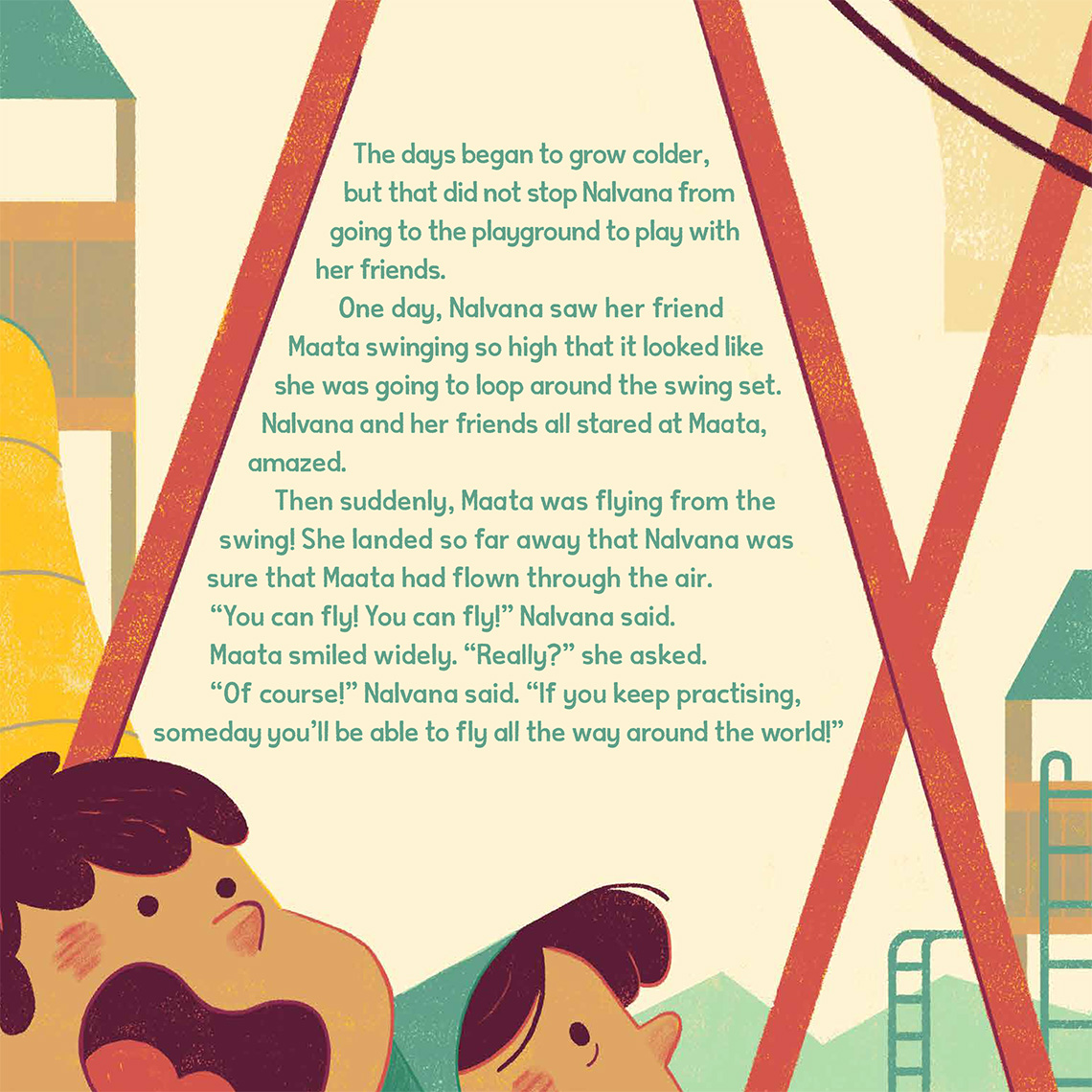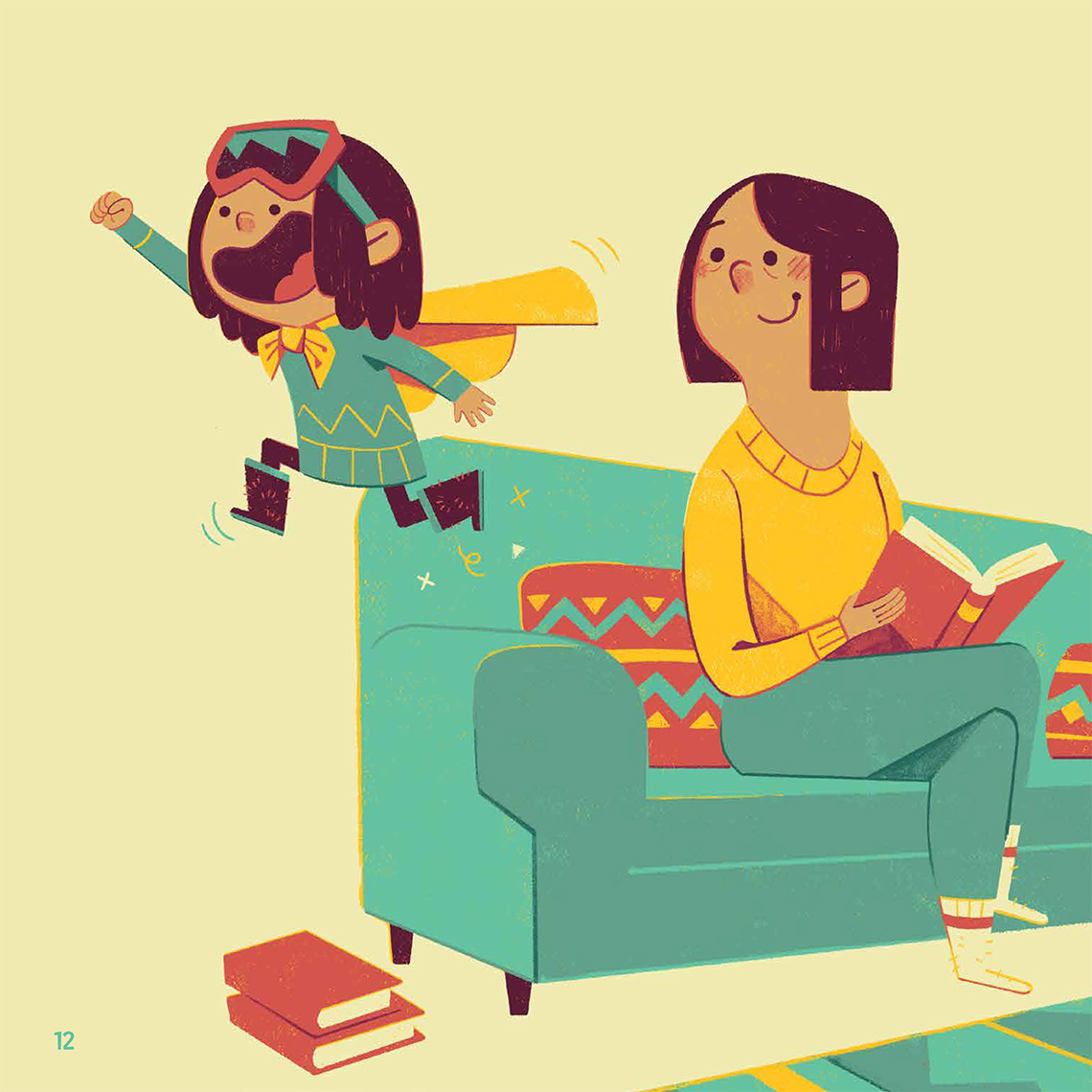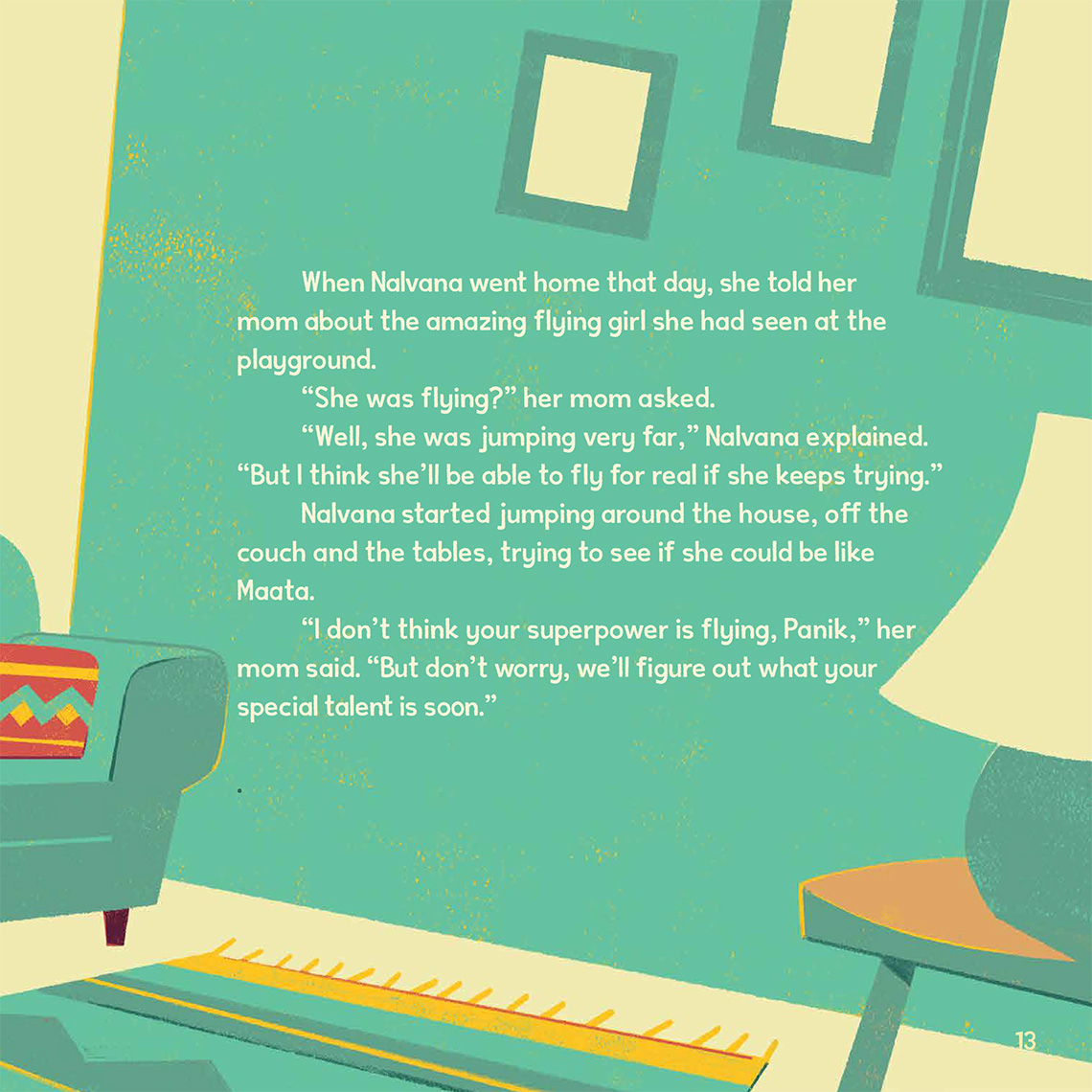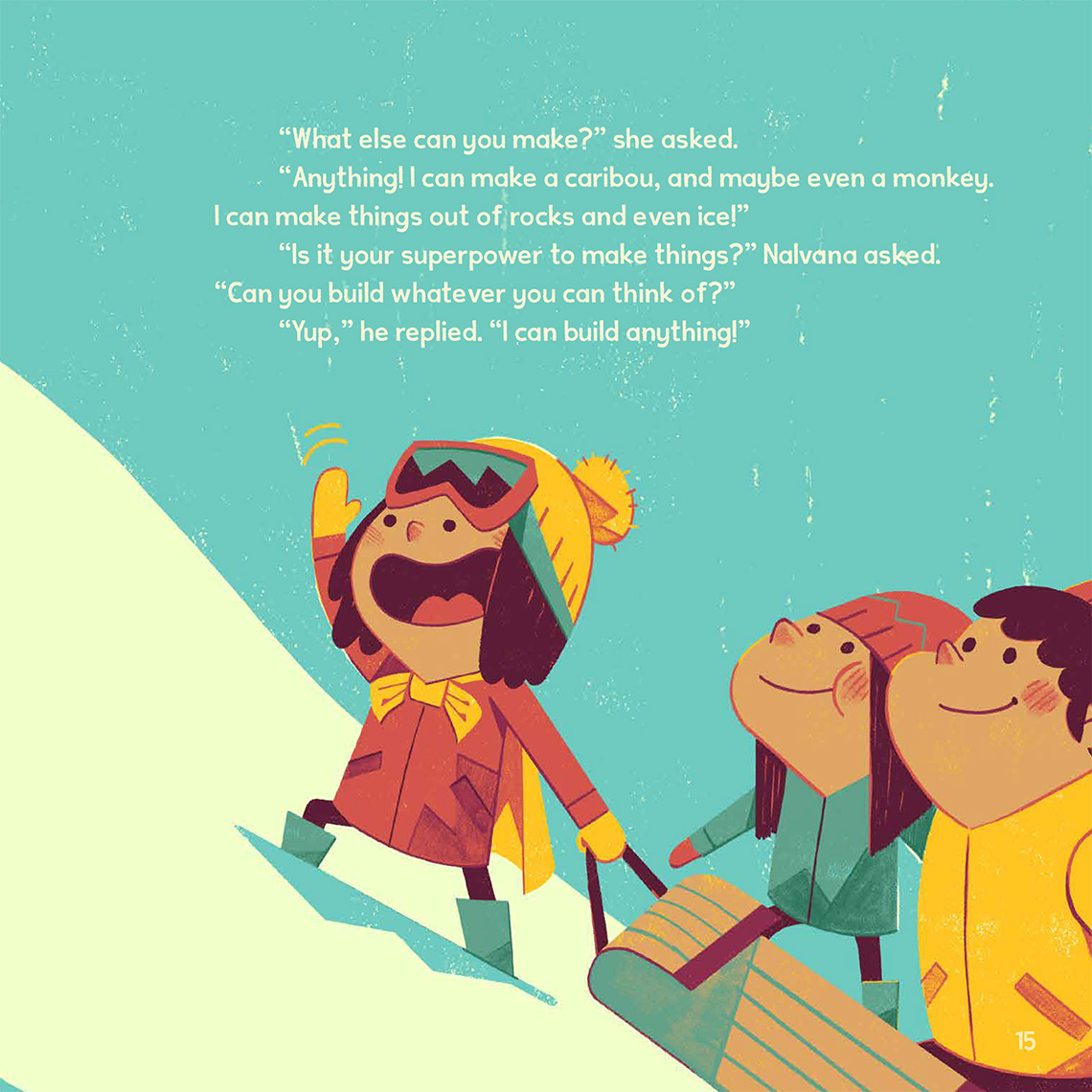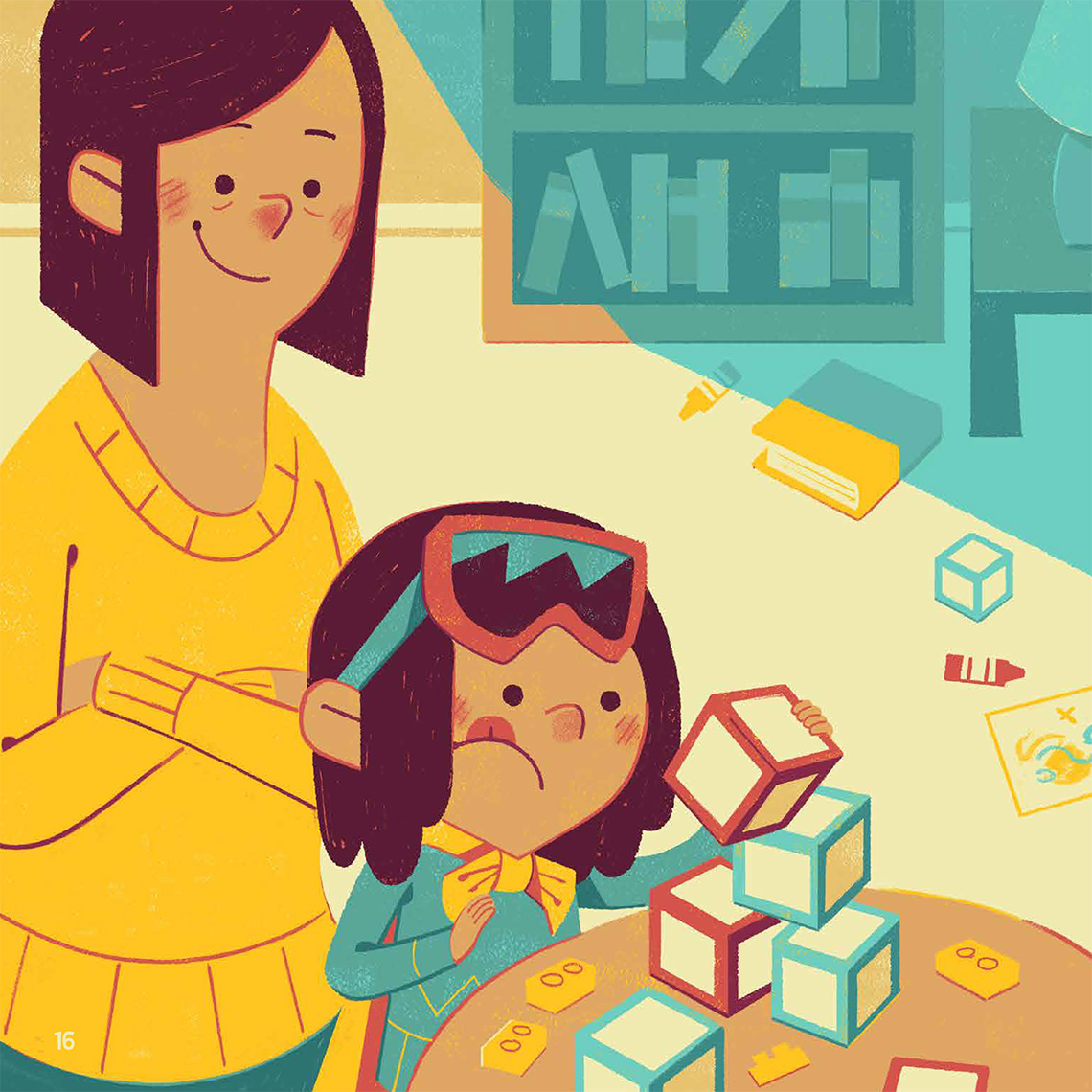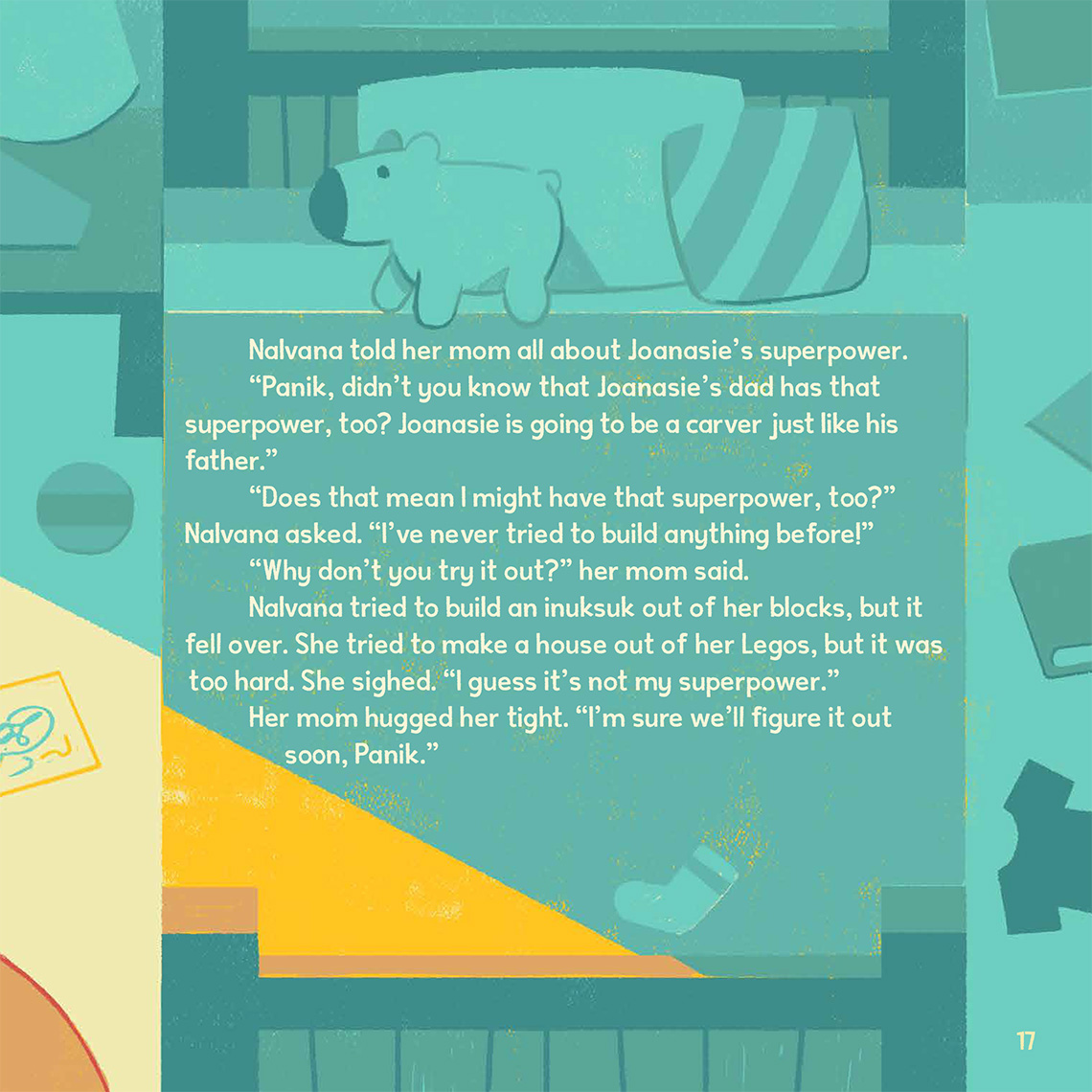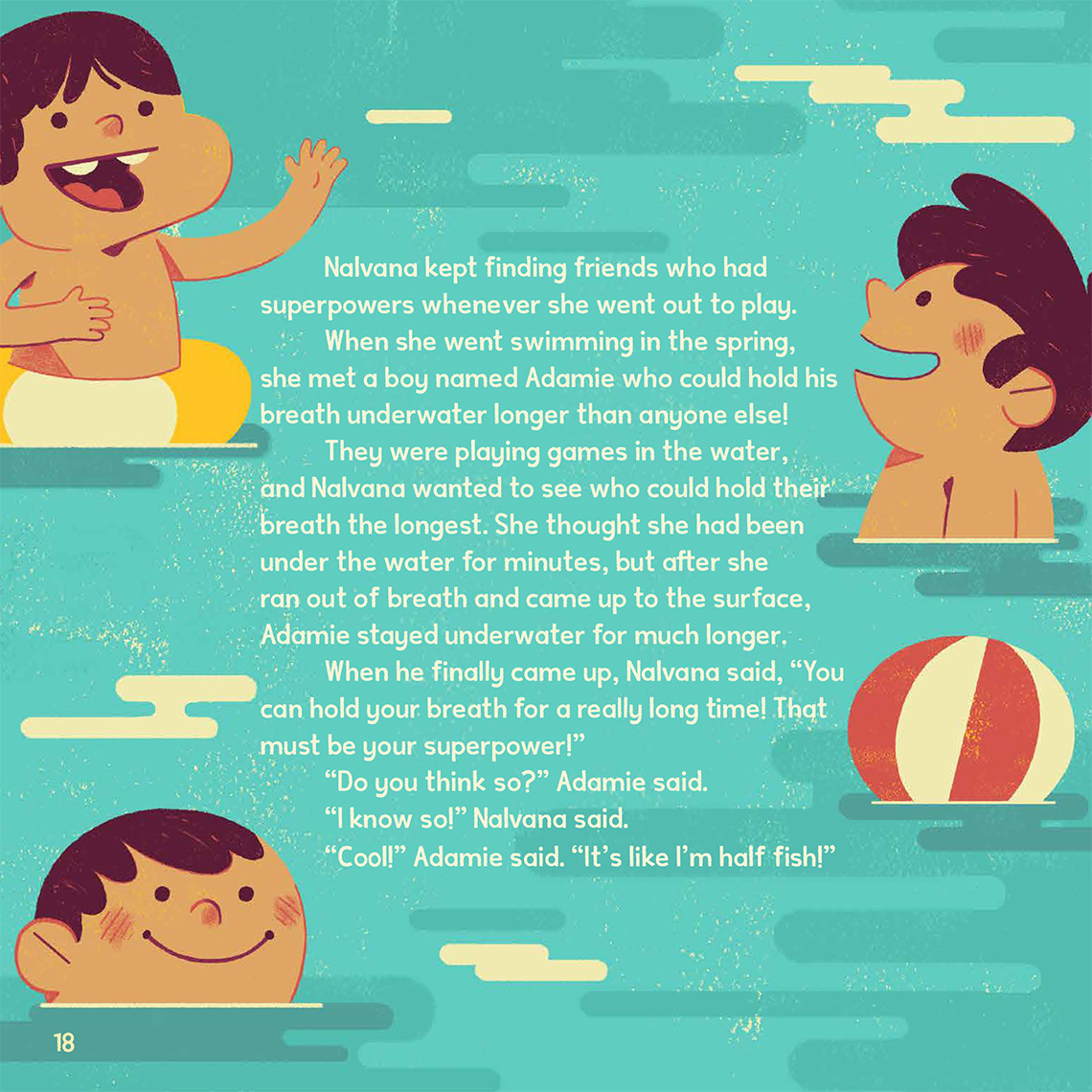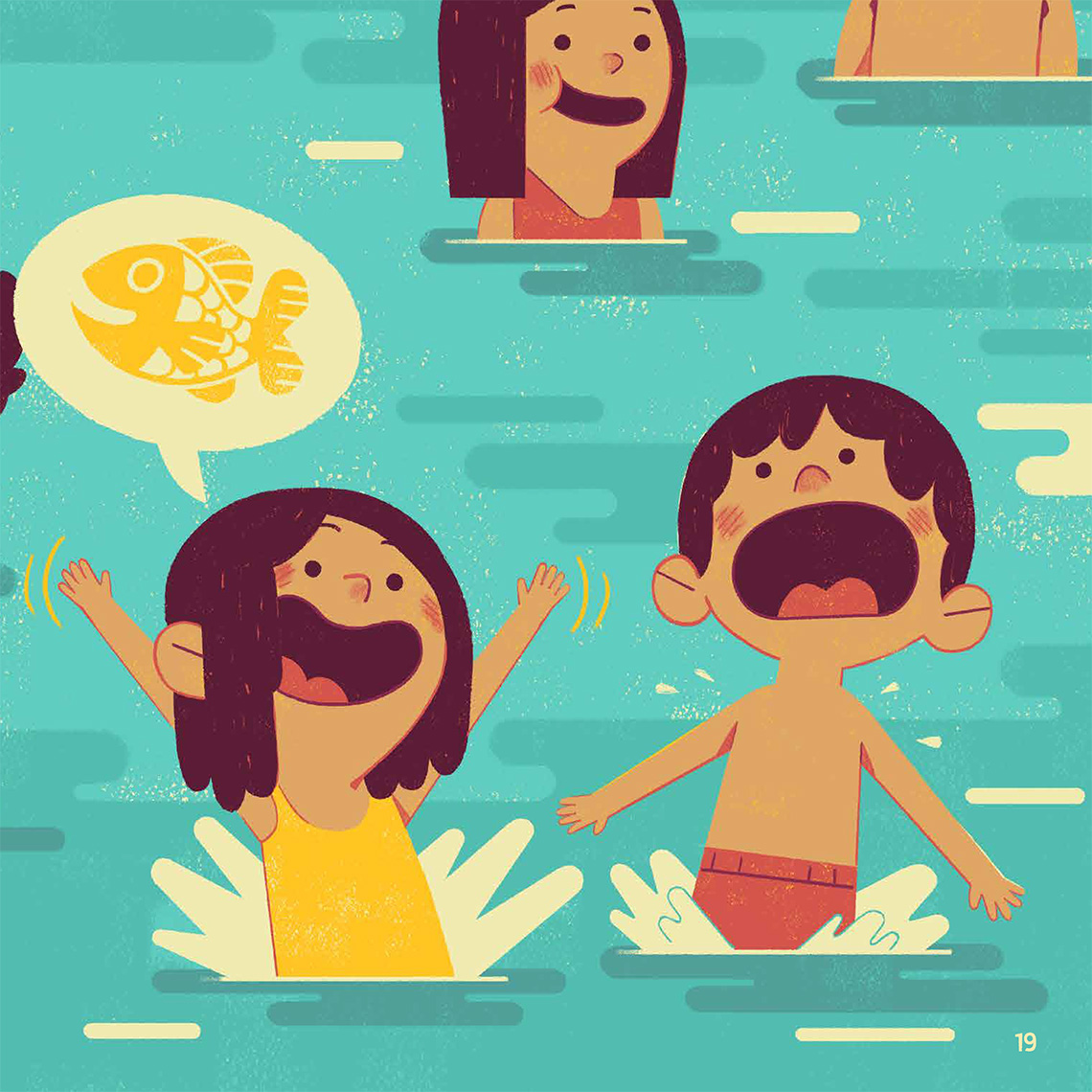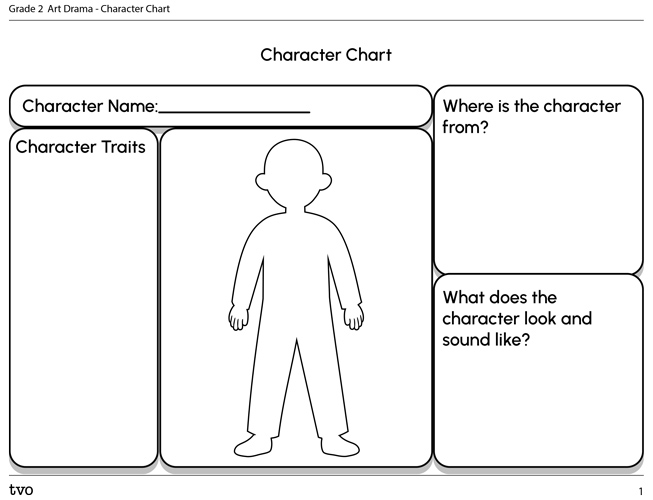Minds On
Let’s warm up!
Don’t forget to do your safety check!
Warm Up
Warm up

Find a comfortable position. For this exercise, take a deep breath in and then exhale, lifting your head up and making a whispered ‘hah’ sound or breathe out like you are a dragon breathing fire.
Do it again, and again. Try to breathe even more fire each time.
Access the next audio recording entitled “Dragon Breathing Fire” to follow this exercise.
Dragon Breathing Fire
Drama game
Time to tell a silly story!
Start with “once upon a time…” and then tell any story you want — the sillier, the better!
Maybe it’s a story about an astronaut who goes to the moon and discovers it’s made of cheese! Or maybe it's a story about a green alien who only loves to eat spaghetti.
Act out your story as you are telling it, if possible.

Let’s get started!
Explore this video entitled “Wolf Joe: Little Bear Chief” and think about the following questions.
- What do you think about the character of Buddy?
- What are some words you can use to describe them?
Action
Get ready, get set…
Task 1: Characters
In drama stories, there are lots of different characters. When you act out a character in a drama, it’s called a role. When you have a role in a play or drama performance, you have to think about different ways to be your character.
Explore the following images of children playing different roles in a play or drama performance.
Acting out a character means using your body, face, and voice to express how a character feels.
Body
Gestures: What type of gestures would a character use?
Press the following tabs to access examples of gestures a character might use when they meet a friend.


Or do you think they would greet them in a different way?
Movement: What are some ways that characters can move?
Explore this short video to examine how polar bears would move.
Now check out this short video of how a mouse would move.
Finally, explore this short video to examine the movement of a butterfly.
Face
Facial expressions: Facial expressions can be used to show what a character is feeling.
Press the following tabs to access examples of a character’s facial expressions when they are surprised.


How could a character show if they were happy? Or mad?
Voice
Volume: Volume is how loud or quiet a character makes their voice.
Press the following tabs to access examples of how a character uses volume.
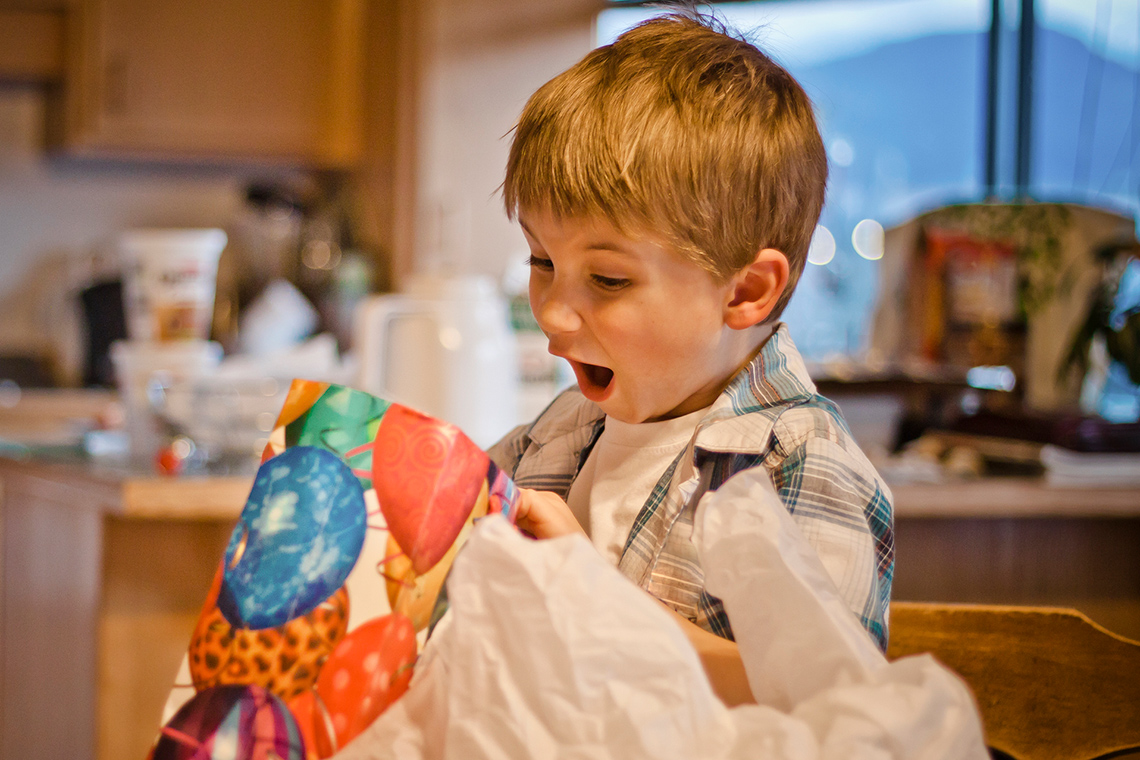
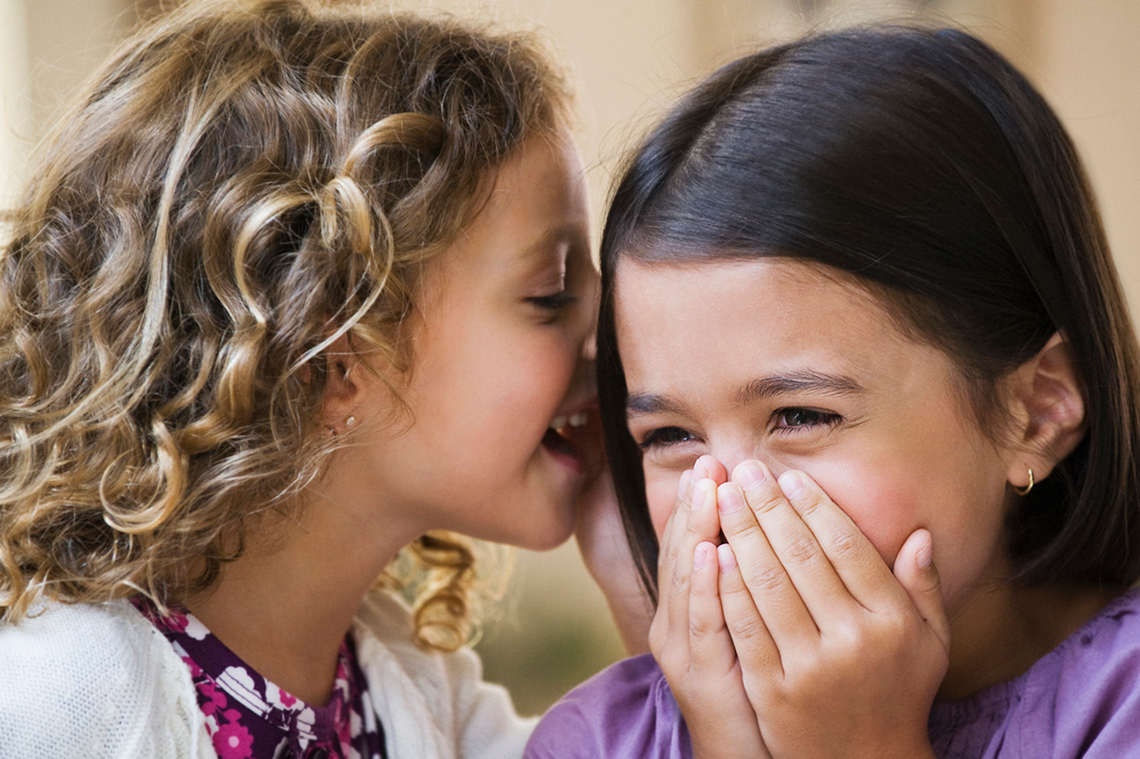
Task 2: What defines a character?
Any kind of character in a story or a play has character traits. Character traits are words that describe a character’s personality and is what makes them who they are.
How do you figure out someone’s character traits? You do so by observing the person’s words and actions. Characters can have more than one character trait.
For example, if a student helps another student pick up the books they dropped, their character trait is helpful.
Complete the following matching activity. For each character trait, select the corresponding actions.
Task 3: Buddy’s character traits
Think of Buddy from the video entitled “Wolf Joe: Little Bear Chief” that you explored in the Minds On section. What character traits do you think Buddy has?
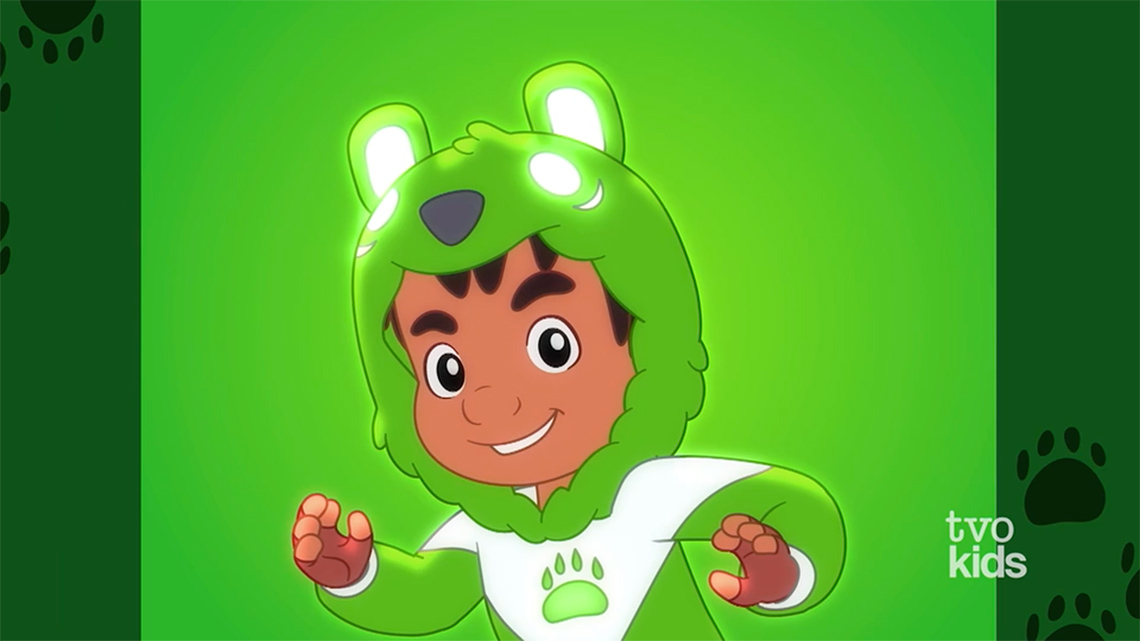
Explore the following video clips, paying attention to Buddy’s words and actions and think about the following questions.
- What character traits do you think Buddy has?
- How do you know?
Clip 1
Press ‘Answer’ to learn about Buddy’s character trait, and the action that proves it.
Character trait: Responsible
When someone takes care of something and is being careful about it, they are being responsible.
Action: Nina says that Buddy was super careful with the crow feather. That means he was responsible.
Can you think of a time when you were responsible?
Clip 2
Press ‘Answer’ to learn about Buddy’s character trait, and the action that proves it.
Character trait: Determined
When someone makes up their mind and decides to do something, they are determined.
Action: Buddy is determined to get a crow feather. He says, “I can’t give up now!”
Can you think of a time when you were determined?
Clip 3
Press ‘Answer’ to learn about Buddy’s character trait, and the action that proves it.
Character trait: Confident
When someone believes in themselves and what they can do, they are confident.
Action: Buddy is very confident. He says, “No bird is gonna outsmart Buddy the Bear!”
Can you think of a time when you were confident?
Clip 4
Press ‘Answer’ to learn about Buddy’s character trait, and the action that proves it.
Character trait: Impatient
When someone does not want to wait for something, they are impatient.
Action: Buddy is a little impatient that he doesn’t have a crow feather yet. He says, “No fair! The crow took the yarn but it didn’t leave me a feather!”
Can you think of a time when you were impatient?
Consolidation
Nalvana’s character traits
Explore the story of Nalvana in What’s My Superpower? through the following images.
Check out this audio recording entitled “Inuktitut Part 2” to explore the story in Inuktitut.
Inuktitut Part 2
Now access this audio recording entitled “English Part 2” to explore the story in English.
English Part 2
What traits does Nalvana have? How do you know?
Note: Character traits are words that describe a character’s personality. These traits make them who they are.
Some examples of character traits include:
- brave
- confident
- impatient
- determined
Go!
Your turn
Record your thoughts on what Nalvana’s character traits are and how you know by completing the Nalvana Character Traits Chart in your notebook or using the following fillable and printable document. Consider adding your work to your drama portfolio.
The first trait in the chart is completed for you.
| Nalvana’s character traits | How I know |
|---|---|
|
Kind |
Nalvana is always kind to her friends, and she says kind words to them about their superpowers. |
Press the ‘Activity’ button to access Nalvana Character Traits Chart.
Portfolio
Drama portfolio
Consider adding the answers to the following reflection questions to your portfolio.
- What character traits do you think you have? What makes you special?
- How does using body, face, and voice help to become a character?
- Do you share any character traits with Buddy and Nalvana?
- Name one thing you learned about drama today.
Reflection
How do you feel about what you have learned in this activity? Which of the next four sentences best matches how you are feeling about your learning? Press the button that is beside this sentence.
I feel…
Now, record your ideas about your feelings using a voice recorder, speech-to-text, or writing tool.
Press ‘Discover More’ to extend your skills.
Discover MoreNow it’s time to create your own character. Your character can be anything you want it to be. It could be a superhero, or a whale in the ocean, or an alien in space. You can also pick a character from your favourite TV show, book, or movie.
You can think about the following things:
- What character traits does your character have? Are they friendly? Are they kind? Maybe they are bossy? Or impatient? Characters can have more than one character trait.
- Where does your character come from? A small town or big city?
- What does your character look like and sound like?
- What would your character do in…
- a boring situation
- a fun situation
- an exciting situation
Character chart
Record your thoughts in the following chart.
Complete the Character Chart in your notebook or using the following fillable and printable document. Consider adding your work to your drama portfolio.
